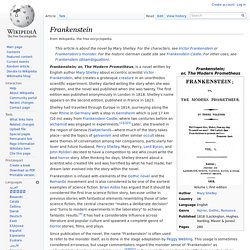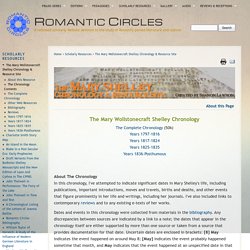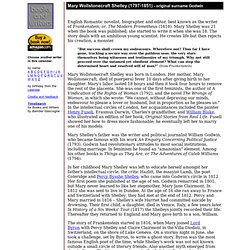

Frankenstein (1931) Filmsite Review. Background The classic and definitive monster/horror film of all time, director James Whale's Frankenstein (1931) is the screen version of Mary Shelley's Gothic 1818 nightmarish novel of the same name (Frankenstein; Or, The Modern Prometheus).

The film, with Victorian undertones, was produced by Carl Laemmle Jr. for Universal Pictures, the same year that Dracula (1931), another classic horror film, was produced within the same studio - both films helped to save the beleaguered studio. [The sequel to this Monster story is found in director James Whale's even greater film, Bride of Frankenstein (1935).] The film's name was derived from the mad, obsessed scientist, Dr. Henry Frankenstein (Colin Clive), who experimentally creates an artificial life - an Unnamed Monster (Boris Karloff), that ultimately terrorizes the Bavarian countryside after being mistreated by his maker's assistant Fritz and society as a whole. How do you do? You must have faith in me, Elizabeth. Frankenstein Schmoop. Despite what Hollywood wants you to think, there was no flash of lightning, no bolt through the head, no scientist crying "It's alive!

," and no flat-top haircut. (Oh, and the monster wasn't named Frankenstein.) But if you ask us, the real story of Frankenstein is way, way cooler: During the summer of 1816, eighteen-year-old Mary Wollstonecraft Godwin was hanging out in a Swiss lake house with her lover and future husband Percy Bysshe Shelley; famous English poet, Lord Byron; and Byron's doctor John Polidori. (And some others, but those are the important names.) So, you're bored out of your skull in a lakeside villa with two of the most famous writers in all of English literature. You have a ghost story contest. Lord Byron challenged everyone to write the scariest, freakiest, spookiest story they could come up with. Let's back up for a second: Mary Wollstonecraft Godwin wasn't just any eighteen-year-old. Should there be limits to scientific inquiry? Horror Films. Horror Films are unsettling films designed to frighten and panic, cause dread and alarm, and to invoke our hidden worst fears, often in a terrifying, shocking finale, while captivating and entertaining us at the same time in a cathartic experience.

Horror films effectively center on the dark side of life, the forbidden, and strange and alarming events. They deal with our most primal nature and its fears: our nightmares, our vulnerability, our alienation, our revulsions, our terror of the unknown, our fear of death and dismemberment, loss of identity, or fear of sexuality. Whatever dark, primitive, and revolting traits that simultaneously attract and repel us are featured in the horror genre.
Horror films are often combined with science fiction when the menace or monster is related to a corruption of technology, or when Earth is threatened by aliens. Introduction to Horror Films Genre: Horror films go back as far as the onset of films themselves, over a 100 years ago. Frankenstein Wikipedia. Frankenstein; or, The Modern Prometheus, is a novel written by English author Mary Shelley about eccentric scientist Victor Frankenstein, who creates a grotesque creature in an unorthodox scientific experiment.

Shelley started writing the story when she was eighteen, and the novel was published when she was twenty. The first edition was published anonymously in London in 1818. Shelley's name appears on the second edition, published in France in 1823. Shelley had travelled through Europe in 1814, journeying along the river Rhine in Germany with a stop in Gernsheim which is just 17 km (10 mi) away from Frankenstein Castle, where two centuries before an alchemist was engaged in experiments.[1][2][3] Later, she traveled in the region of Geneva (Switzerland)—where much of the story takes place—and the topics of galvanism and other similar occult ideas were themes of conversation among her companions, particularly her lover and future husband, Percy Shelley.
Summary[edit] Composition[edit] Mary Shelley Wikipedia. Mary Shelley Biography. Mary Wollstonecraft Shelley August 30, 1797-February 1, 1851 Nationality: British; English Birth Date: August 30, 1797 Death Date: February 1, 1851 Genre(s): NOVELS; ESSAYS; TRAVEL; NOVELLAS Table of Contents:

The Life of Mary Shelley. Mary Wollstonecraft Shelley Chronology &a. The Complete Chronology (50k) Years 1797-1816 Years 1817-1824 Years 1825-1835 Years 1836-Posthumous.

Mary Shelley. English Romantic novelist, biographer and editor, best known as the writer of Frankenstein; or, The Modern Prometheus (1818).

Mary Shelley was 21 when the book was published; she started to write it when she was 18. The story deals with an ambitious young scientist. He creates life but then rejects his creation, a monster. "But success shall crown my endeavours. Wherefore not? Mary Wollstonecraft Shelley was born in London. Mary Wollstonecraft Shelley - Biography and Works. Mary Wollstonecraft Shelley (1797-1851), English author wrote the Gothic horror story Frankenstein or; The Modern Prometheus (1818); “I am alone and miserable; man will not associate with me; but one as deformed and horrible as myself would not deny herself to me.
My companion must be of the same species and have the same defects. This being you must create.” --Ch. 16 Started as a ghost story and inspired by a conversation Shelley had overheard between her husband Percy Bysshe Shelly and Lord George Gordon Byron talking about galvanism, it soon became one of the first best selling works by a female author. The Gothic movement evolved from Romanticism, delving deeper into profound philosophical questions like the quest of man to achieve perfection, and through a character even at first so disturbing as the scientifically created Creature we ultimately see all of humanity’s moral struggles. In 1822, Shelley suffered a miscarriage which almost took her life. Biography written by C.D.
Frankenstein by Mary Wollstonecraft Shelley. Tes me to heaven, for nothing contributes so much to tranquillize the mind as a steady purpose--a point on which the soul may fix its intellectual eye. This expedition has been the favourite dream of my early years. I have read with ardour the accounts of the various voyages which have been made in the prospect of arriving at the North Pacific Ocean through the seas which surround the pole.
You may remember that a history of all the voyages made for purposes of discovery composed the whole of our good Uncle Thomas' library. My education was neglected, yet I was passionately fond of reading. These volumes were my study day and night, and my familiarity with them increased that regret which I had felt, as a child, on learning that my father's dying injunction had forbidden my uncle to allow me to embark in a seafaring life. These visions faded when I perused, for the first time, those poets whose effusions entranced my soul and lifted it to heaven. Frankenstein at Literature.org.